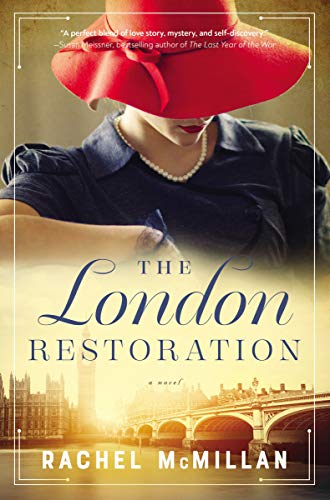The London Restoration
Diana Foyle and Brent Somerville have been married four years but have never really lived together. They said their vows during World War II, in a beloved London church damaged by bombs, and then parted, he to the Front and she to work as a translator of German radio transmissions.
Now the war is over and he has returned, only to find her mysteriously gone. Five weeks later, she is back, but married life isn’t simple: Brent has wounds he won’t talk about, and Diana has secrets she isn’t allowed to talk about. She drags him to her favorite churches, which have become meeting sites for a clandestine group following a pattern that only she, with her extensive knowledge about churches built by Christopher Wren, can decode.
As they struggle to trust each other again, and Diana puzzles out what’s happening at the churches, the narrative jumps back and forth in time. We see their courtship, glimpse his trauma, and watch her friendships develop in the secretive huts where translation activities seep into intelligence gathering and possibly espionage. We are told repeatedly how much she loves churches – indeed she is somewhat a savant in her obsession – and about Brent’s brilliance as an interpreter of St. Paul’s writings.
For all that’s going on, the novel can’t quite decide if it’s a romance of re-marriage or a thriller. It wants to be both and more, but comes up short. There are hints Diana had a colleague who was more than a friend, but no details. Another colleague has disappeared, but with so little context that it isn’t even a central mystery. The reader feels little of her joy at the churches’ beauty or her pain at their loss. We are told from the start that she is already thinking about their future, with very little sense of how she got there.










